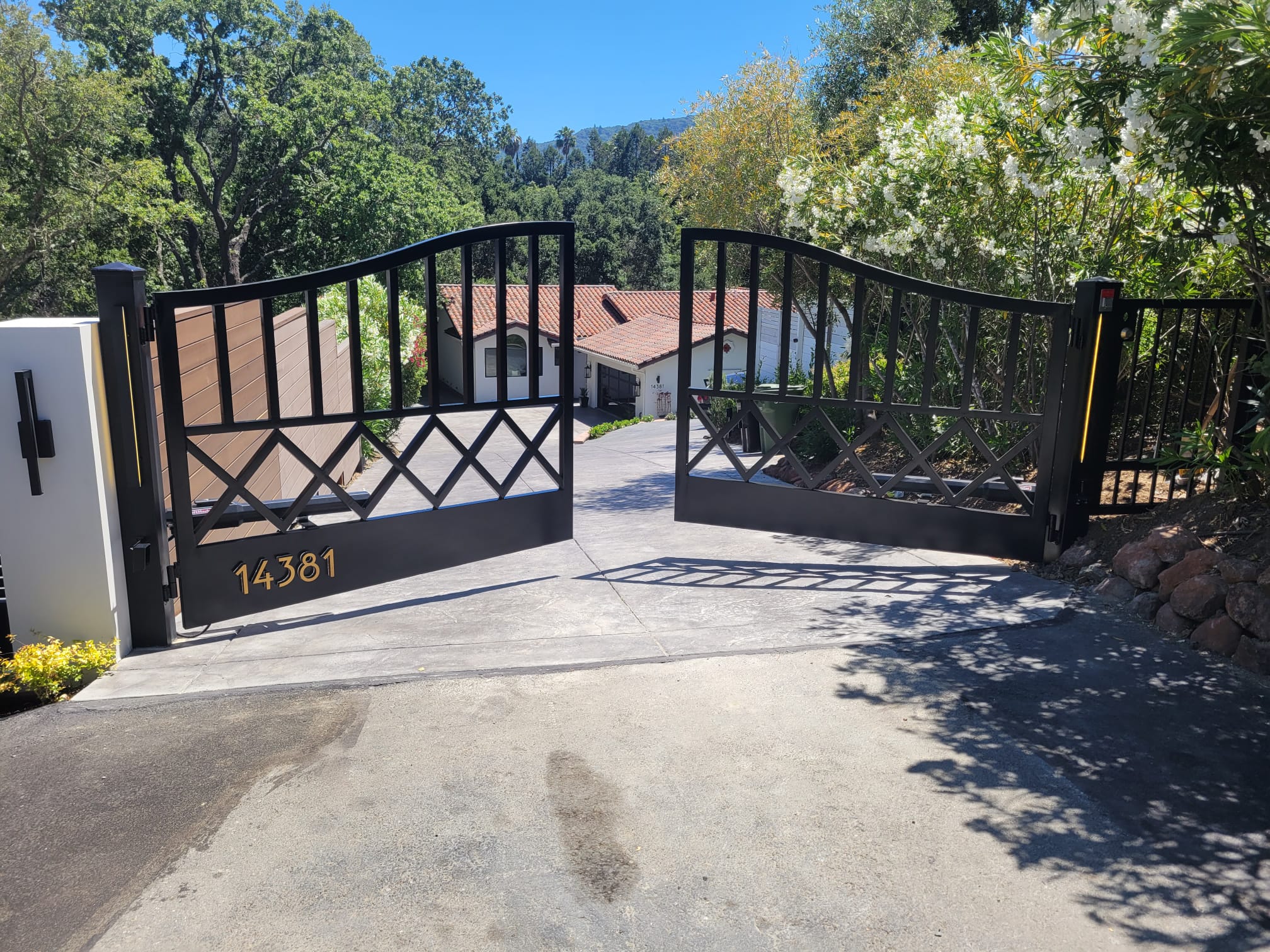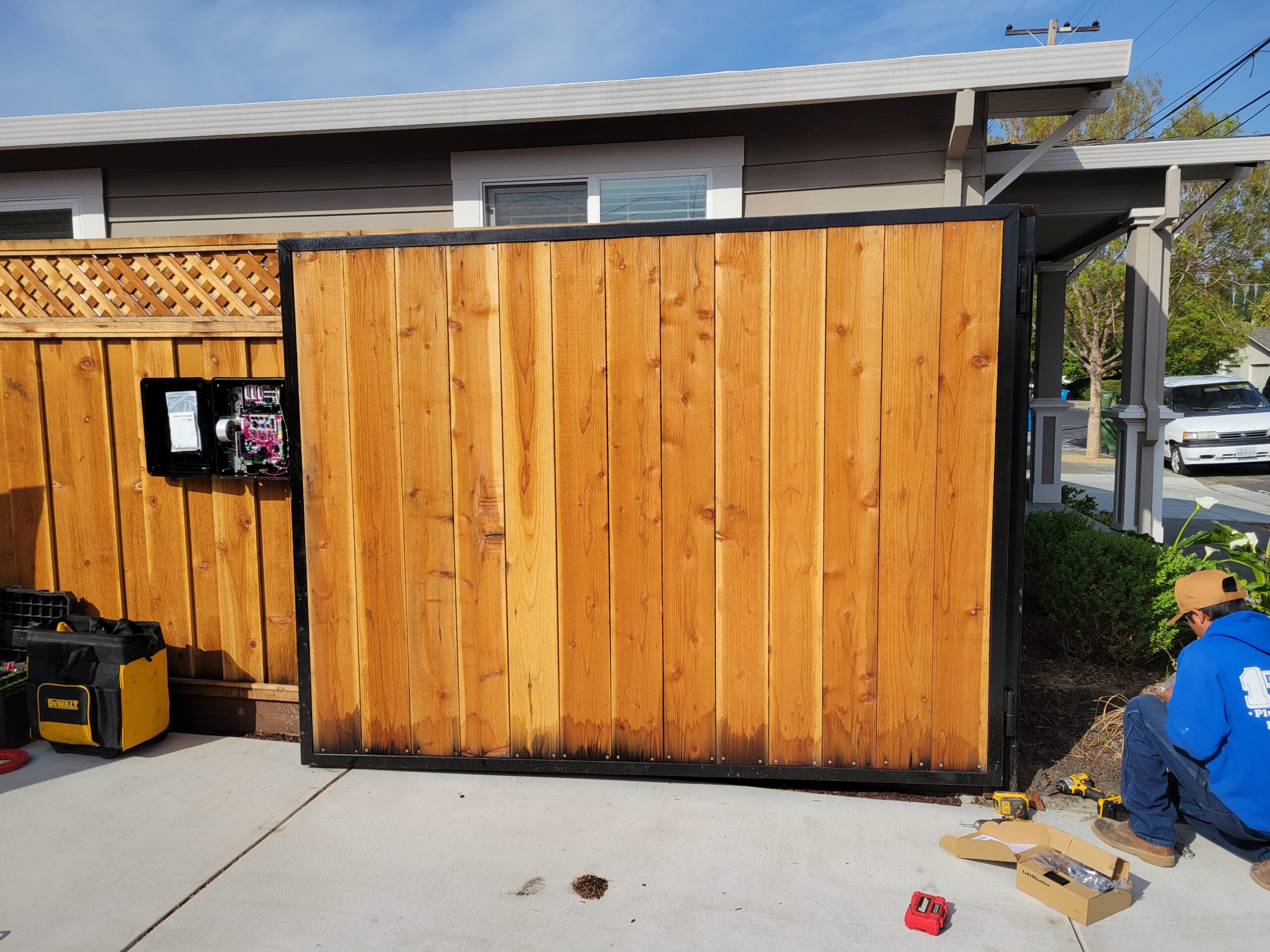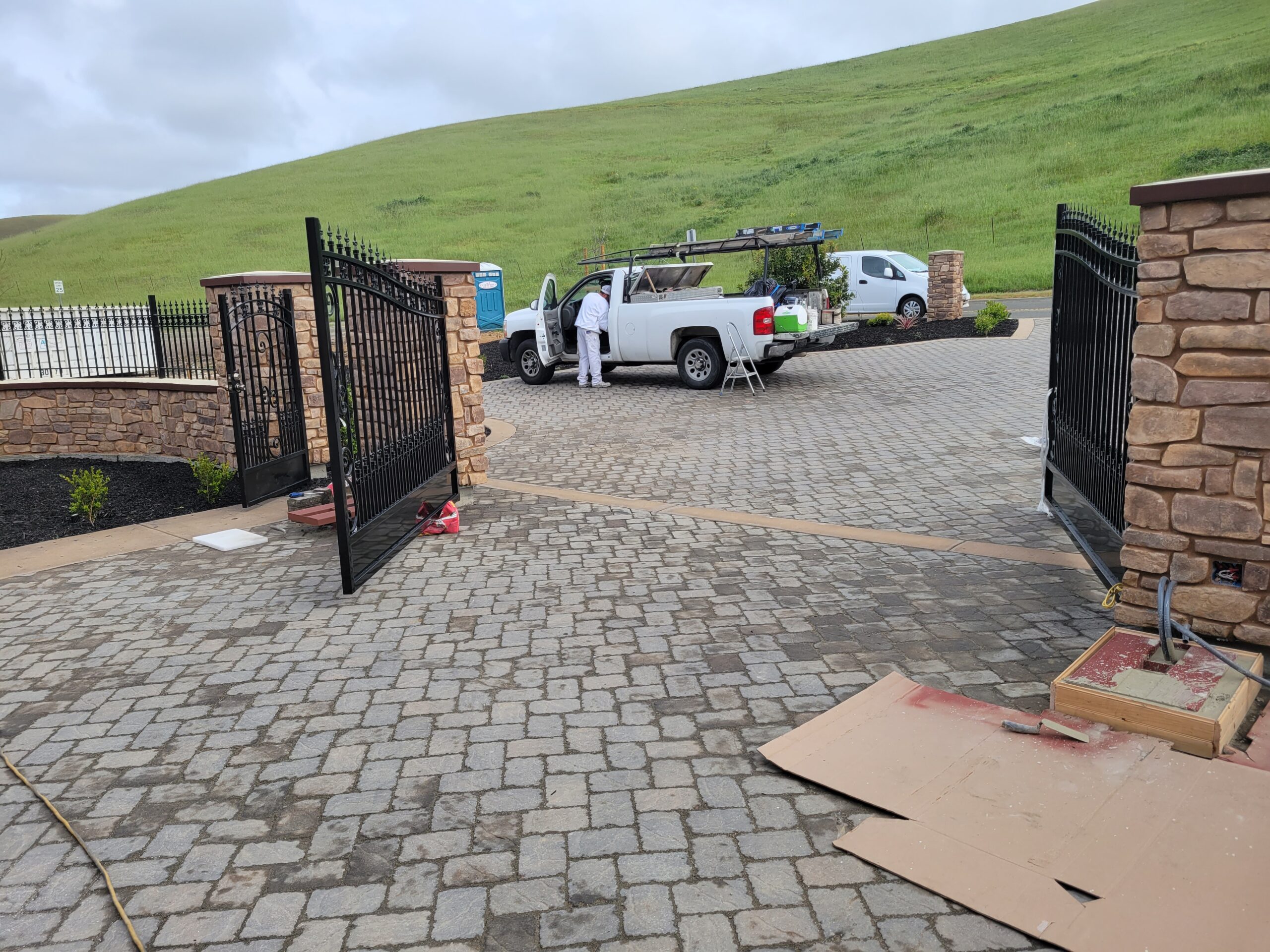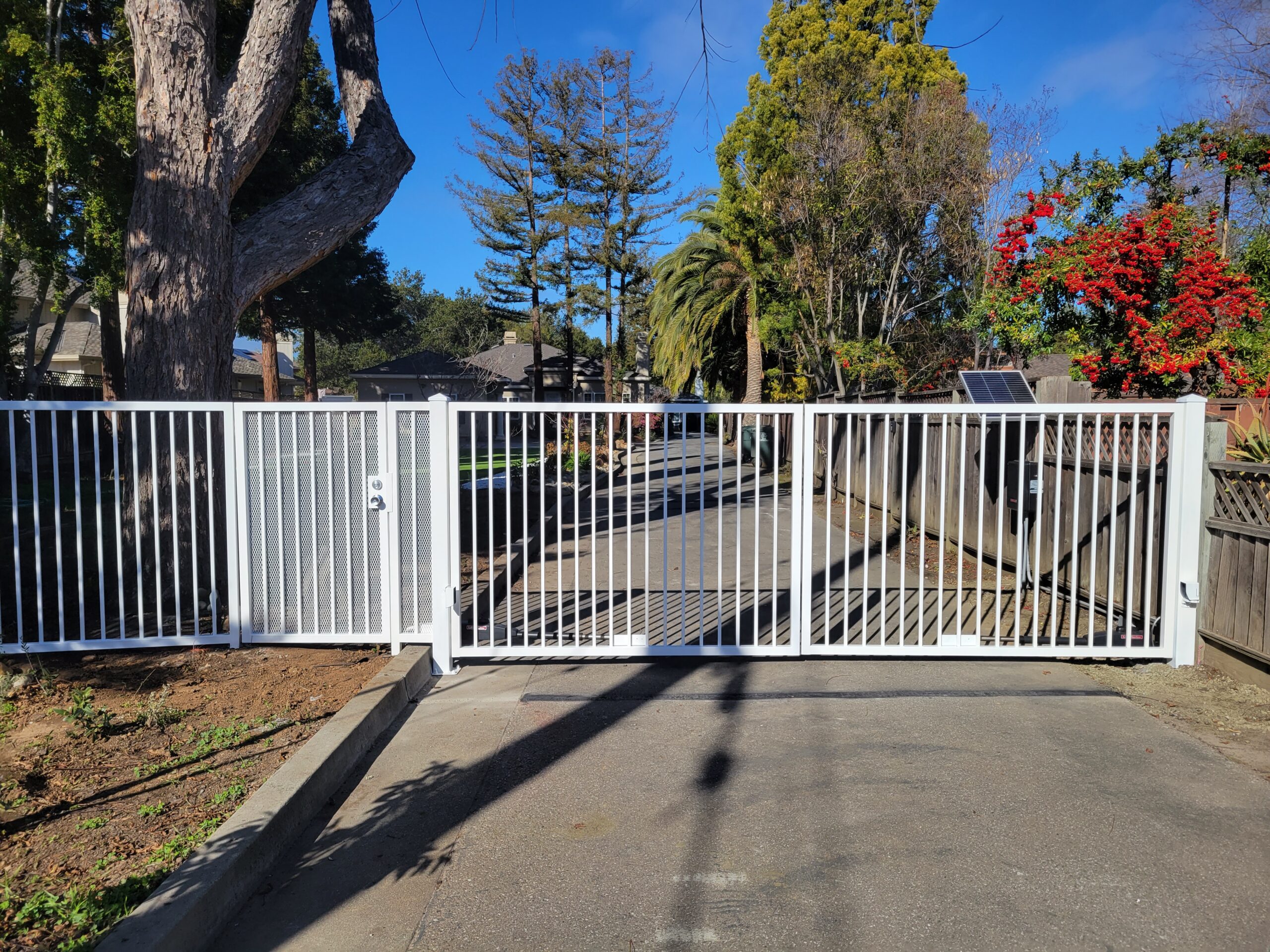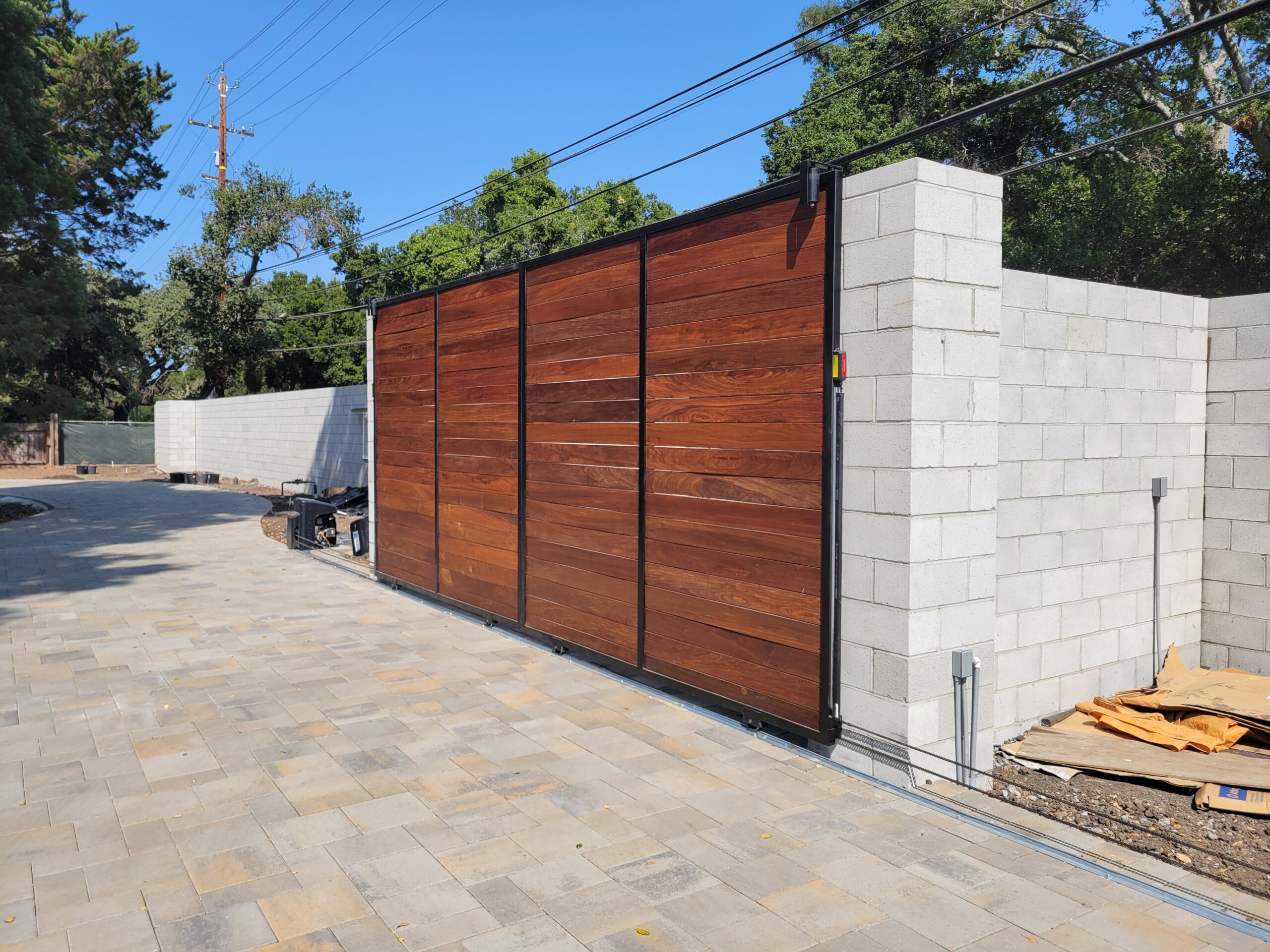Blog & News
Gate Sags and Soft Soil: Why San Rafael Yards Demand a Different Type of Post Anchor
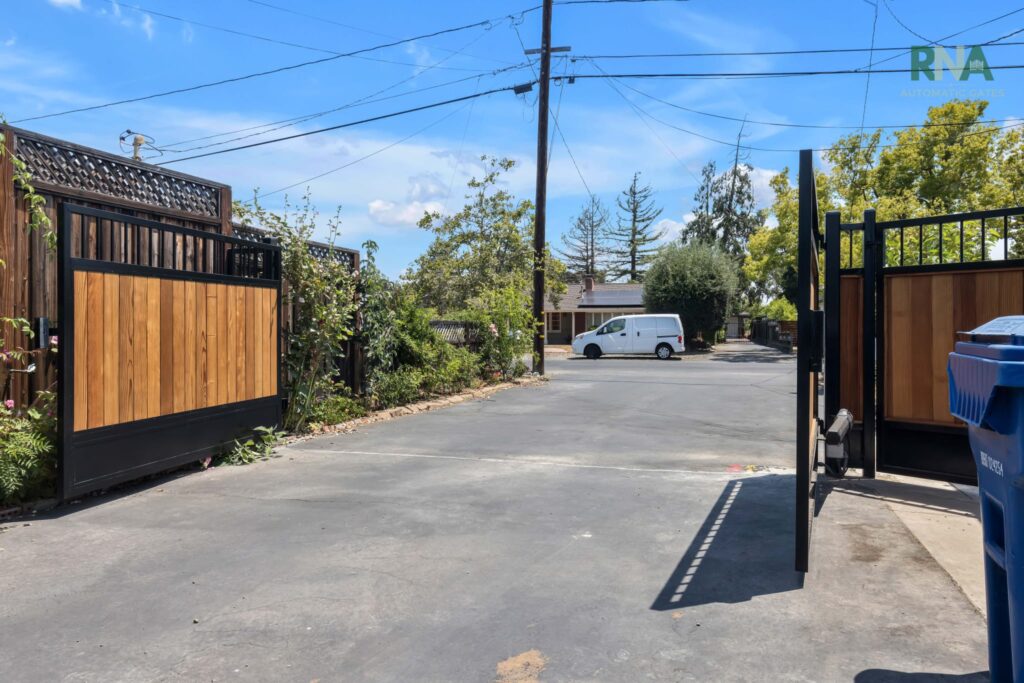
jay jay
Oct 30, 2025
Article, Uncategorized
If you’ve been searching forGate Repair San Rafael, look no further. RNA Automatic Gates is the local expert in gate foundation solutions designed specifically for the soft and shifting soils common to San Rafael, California. In this article, we delve into why traditional post anchors often fail in this environment and unveil how modern deep-set anchors and soil-conscious designs can protect your gate for decades.
The Hidden Enemy Beneath Your Gate
Think about this: your new swing gate looks perfect now, standing tall and straight. But after a year or two, it might start to drag, lean, or close unevenly. The problem usually isn’t with the gate itself but with what’s under it.
In Marin County, especially around San Rafael, the ground is made of clay and loam. This kind of soil gets bigger when it’s wet and smaller when it’s dry. As the seasons change, the ground moves a little, pushing and pulling on the gate’s base. Over time, this pressure can make the post shift or sink, which causes the gate to lean, sag, or even crack.
We understand the importance of addressing this problem at the foundation level. Gates rarely fail because of faulty hinges or hardware. They fail from below, where the soil dictates how stable the entire structure will remain.
Why Traditional Anchors Fail in San Rafael’s Moist Ground
San Rafael’s clay-heavy soil behaves differently than sandy or loamy soils found in other parts of California. It absorbs water like a sponge during the rainy season and hardens like cement when it dries. Most traditional anchors, such as short concrete footings or untreated steel posts, were never engineered for this kind of soil movement.
When the soil gets full of water, it swells and pushes against the gate post. When it dries, it shrinks and leaves small gaps around the base. Over time, this back-and-forth movement makes the post loosen little by little. Soon, the post starts to lean, and the gate goes out of line. What begins as a small problem can quickly turn into a sagging gate that won’t close right.
The Science of Soil Movement Around Gate Posts
To better understand this, let’s take a closer look at what occurs beneath the surface. When clay soil absorbs moisture, the particles expand by up to ten percent in volume. This creates upward and sideways pressure on anything embedded in the soil, including your gate post. Once the ground dries out, the clay shrinks and settles unevenly, which leaves air pockets beneath the anchor.
Each tiny shift may only move the post by a few millimeters, but those millimeters accumulate over time. After several rainy and dry seasons, those small movements turn into noticeable leaning or dragging. In San Rafael clay soil, the movement is predominantly vertical but never uniform. One side of the post often moves more than the other, twisting the gate frame out of true alignment.
Simply tightening parts on the gate won’t fix what’s really wrong. The answer is to give the post firm support underground so it can’t move when the soil does. Deep-set foundations and soft soil anchors are the best ways to do this.

Recognizing Early Signs of Gate Sagging
Homeowners often wait until a gate visibly leans before calling for help, but there are earlier, subtle warning signs that something is wrong. Recognizing these clues early can prevent expensive foundation repairs later.
- The latch stops lining up perfectly. You may notice that the latch catches slightly or doesn’t meet evenly anymore. This small misalignment is one of the first signs the post is shifting.
- The gate begins to stick when swinging open or closed. A previously smooth swing now feels heavy or unbalanced, suggesting that one side is settling lower than the other.
- Hinges or bolts need tightening more often. When the soil moves, the pressure on the hinge points changes, causing them to loosen over time.
- The post cap no longer sits level. Even a small tilt in the post cap is a strong indicator that the anchor beneath has moved or that the soil has compacted unevenly.
These indicators often appear long before the gate leans noticeably. It’s worth mentioning that catching these problems early makes post anchor repair far easier and less costly.
The “One Finger” Test for Gate Alignment
There’s a simple way for homeowners to assess their gate’s stability. Open your gate halfway and try to swing it back and forth using only one finger.
If the gate moves freely and evenly, your post alignment is still sound. However, if it feels heavy, drags, or sticks partway through the swing, that suggests hidden post instability. This easy test provides a quick, no-tool method to detect early soil movement before it becomes a structural concern.
Looking for Affordable Garage & Gate Repairs?
We offer quality service at competitive rates. Call (650) 912-1200 today to schedule your repair.
Real Case Study: The Sleepy Hollow Swing Gate Repair
A recent gate repair project in the Sleepy Hollow neighborhood of San Rafael illustrates the power of a redesigned anchor system.
The homeowner had a large wrought iron swing gate that began leaning inward after several wet winters. The original installation used standard concrete-set steel posts, which are common but unsuitable for San Rafael’s active clay soil. Upon inspection, our team discovered fractures in the concrete footing and voids beneath it caused by repeated wet-dry cycles. The posts had tilted almost two inches out of plumb.
To restore the gate, we installed a custom deep-set anchor system using helical steel piles drilled over four feet into stable subsoil. This design reached below the active clay layer and into solid ground. Once re-aligned, the gate swung smoothly again, perfectly balanced and stable.
Years later, the installation remains firm, even after heavy winter storms. This demonstrates how an engineered gate foundation fix can turn a failing gate into a long-lasting structure built for San Rafael’s conditions.
Deep-Set Anchors: The Secret Weapon for San Rafael Yards
When it comes to long-term stability, deep-set anchors outperform traditional short footings by a significant margin. These anchors extend below the upper, moisture-reactive clay layer into stable subsoil that does not expand and contract with the weather.
Essentially, the deeper the anchor, the greater its resistance to movement. This makes deep-set systems vital for structural gate anchors, especially for large or heavy driveway gates that experience both vehicle traffic and changing ground moisture.
At RNA Automatic Gates, we pride ourselves on using reinforced deep-set anchor systems that not only resist shifting but also distribute the gate’s load more evenly across the subsurface. This reduces torque stress on hinge points, minimizes latch misalignment, and prevents long-term distortion of the gate frame.
Steel vs. Helical Piles in Gate Foundations
Steel anchors and helical piles each offer unique advantages, and the choice depends on the specific site conditions and gate design.
- Steel anchors are strong and cost-effective. They work well for smaller pedestrian gates or light-duty applications where soil movement is minimal. For these situations, a galvanized coating can help prevent rust and corrosion caused by San Rafael’s moist environment.
- Helical piles feature screw-like blades that twist deep into the soil. This design allows them to reach stable layers and create superior resistance against both uplift and lateral movement. Helical systems are particularly effective for heavy gates or slopes where traditional anchors would fail.
In many Bay Area gate repair projects, helical piles have become the preferred choice because of their performance in clay soils with variable moisture levels. From this perspective, selecting the correct anchor system is essential to achieving a lasting and reliable installation.

The Role of Drainage in Post Longevity
Poor gate post drainage is one of the main causes of premature anchor failure, as even the best design can weaken when water collects at its base. To prevent this, RNA Automatic Gates builds every foundation with proper drainage, using slopes, gravel bases, and when needed, drain sleeves or weep channels. These features keep water moving away from posts, prevent rust and soil compaction, and maintain stable, dry ground – essential for keeping gate anchors strong and level for years.
Maintenance Habits That Prevent Re-Sinking
Living in San Rafael means contending with changing weather patterns and soil conditions, so regular maintenance is key to preventing re-sinking or tilting. A few consistent habits can extend the life of your gate foundation dramatically.
- Check alignment twice a year. After the rainy season and again in midsummer, use the “one finger” test to ensure your gate swings freely. Early detection of movement allows for small adjustments before serious leaning occurs.
- Inspect the soil base regularly. Look for erosion, cracks, or puddles forming around your posts. Regrading the soil or adding gravel can improve water drainage and reduce future instability.
- Tighten hardware gradually.Don’t over-tighten bolts or hinges to fix a sagging gate, since that can cause more damage. It’s better to find and fix the soil or foundation problem that’s making the gate shift.
- Clear vegetation and roots. Overgrown shrubs or tree roots can trap moisture, weaken soil structure, and accelerate corrosion around the posts. Keep the area around the gate base clear to promote airflow and drainage.
These steps are crucial for maintaining a level and reliable gate throughout the year. A few minutes of inspection and adjustment each season can prevent expensive repairs later on.
When to Call a Professional (and When You Don’t Need To)
Not every leaning gate requires immediate professional intervention, but it’s vital to know where to draw the line between a quick DIY adjustment and a structural issue.
If your gate only sticks slightly or your latch seems misaligned, tightening hinges or cleaning debris from the swing path might be enough. However, if you see visible post tilt, cracks in the footing, or standing water near the base, it’s time to call a professional for post anchor repair.
We’ve got you covered. Whether you need a minor hinge realignment or a complete gate foundation fix, our technicians can assess your soil stability and recommend the most reliable long-term solution. It’s worth mentioning that in many cases, reinforcement retrofits can stabilize existing posts without full excavation, saving both time and cost.
Final Thoughts: Anchoring for the Future
In conclusion, the unique clay soil in San Rafael calls for a careful and well-built foundation. Knowing how changes in moisture affect the ground helps homeowners enjoy gates that stay strong and need fewer repairs over time.
At RNA Automatic Gates, we combine structural engineering with practical, on-the-ground experience to ensure every gate we install is anchored for the future.
When you need reliable gate repair San Rafael, we know your home deserves structural gate anchors built for the soil beneath it. To sum up, don’t let soft soil undermine your investment. Choose a gate foundation solution designed for San Rafael’s conditions, because that’s why your next gate should begin with a smarter anchor.
Frequently Asked Questions (FAQ)
Why does my gate keep sagging even after multiple repairs?
If your gate keeps sagging, it’s usually because the soil under the post keeps moving. Regular anchors don’t stay firm in San Rafael’s clay soil, which swells when wet and shrinks when dry. Using deep-set or helical anchors helps fix this for good by securing the post in stable ground below the shifting layer.
How deep should a gate post anchor be in soft soil?
For soft soil anchors, posts should extend at least thirty-six to forty-eight inches deep to reach compact subsoil. Helical piles can go even deeper depending on soil testing results and gate weight requirements.
Can I fix a leaning gate myself?
Sometimes you can if it’s just a small tilt caused by loose hinges. But if the post is moving because of the soil or base, it’s best to get help from an expert. They’ll find the real cause and repair it so the gate won’t lean again.
In a nutshell, your gate’s strength begins underground, and we’ve got you covered from the first anchor down.

